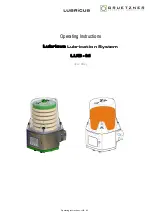
Analog value processing
Function Manual, 06/2014, A5E03461439-AC
113
High-speed analog modules
8
8.1
Basics
High-Speed analog modules (HS) are available for users with high demands regarding
performance and speed. The main characteristics of these HS analog modules compared to
Standard analog modules (ST) is their shorter cycle times. To achieve this goal, the input
and output modules are equipped with components with extremely short throughput and
conversion times. In addition, the entire architecture of the modules is designed for faster
signal processing.
HS analog modules convert the output of measured values and output values at the same
time. Each channel within the module has its own A/D or D/A converter. This means the
cycle time is basically the conversion time and independent of the number of activated
channels. This is true for analog input modules as well as analog output modules. This
means HS modules can be used in fast isochronous mode.
Apart from isochronous mode, the HS analog modules also provide benefits in non-
isochronous (free-running) mode. Due to the fast processing of the process signals, HS
analog modules are able to detect changes in the process values more quickly and to
respond to these events with the appropriate program blocks (for example, hardware
interrupt or cyclic interrupt organization blocks). Additional information on the various
organizational blocks can be found in the STEP 7 online help.
Isochronous mode
Isochronous mode refers to synchronous coupling:
● Of signal acquisition and output via the distributed I/O
● Of signal transmission via PROFIBUS or PROFINET
● Of program processing with the constant bus cycle time of PROFIBUS or PROFINET.
The result is a system that acquires its input signals in constant time intervals, processes
them and outputs the output signals. Isochronous mode guarantees reproducible and
defined process reaction times as well as equidistant and synchronous signal processing
with distributed I/O.
The bus system and the I/O modules work synchronously with configured isochronous
mode. The transmitted input and output data are linked to an "isochronous task" in the CPU.
As a result, the data of a cycle are always consistent. All data of a process image belong
together logically and in time. Jitter in the user program caused by the acquisition of
outdated values is therefore almost impossible.
Even fast processes can be perfectly controlled by the exact timing reproducibility of all
processes. Isochronous mode thus contributes to high control quality and hence to greater
manufacturing precision. While possible fluctuations of the process reaction times are
drastically reduced. The time-assured processing can be utilized to improve machine cycle
times. Shorter cycle times increase the processing speed and help to lower production costs.
Содержание SIMATIC ET 200AL
Страница 2: ......
Страница 143: ......
Страница 218: ......
Страница 250: ......
Страница 296: ......
Страница 337: ......
Страница 365: ......
Страница 392: ......
Страница 419: ......
Страница 451: ......
Страница 483: ......
Страница 597: ......
Страница 648: ......
Страница 702: ......
Страница 739: ......
Страница 781: ......
Страница 804: ......
Страница 828: ......
Страница 853: ......
Страница 880: ......
Страница 906: ......
Страница 996: ...Diagnostics ...
Страница 1121: ......
Страница 1565: ......















































